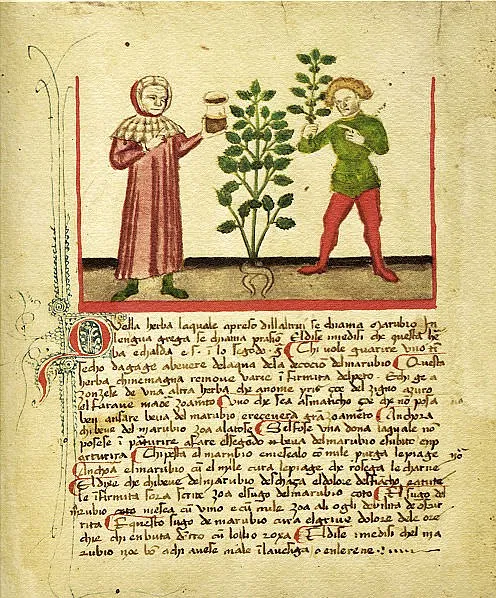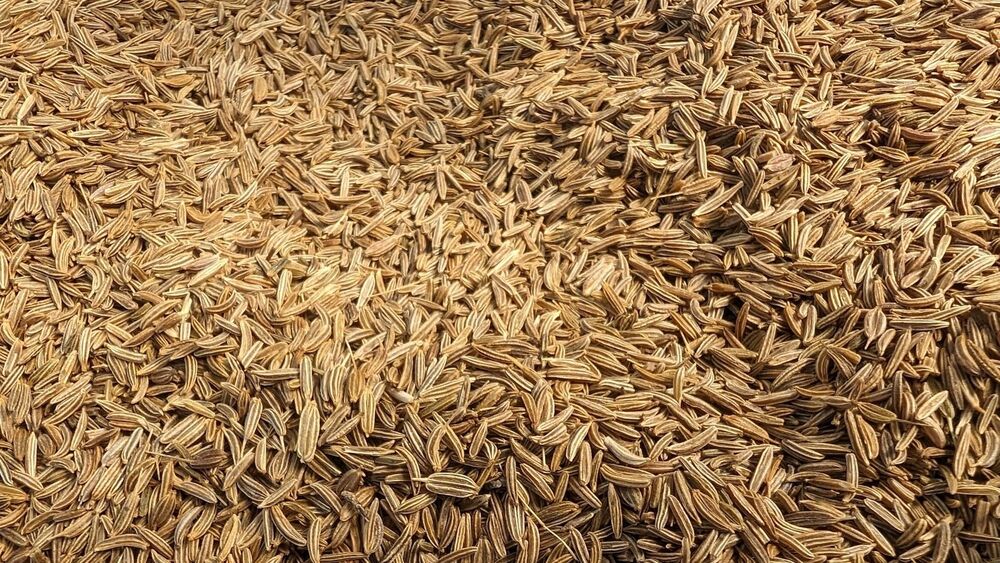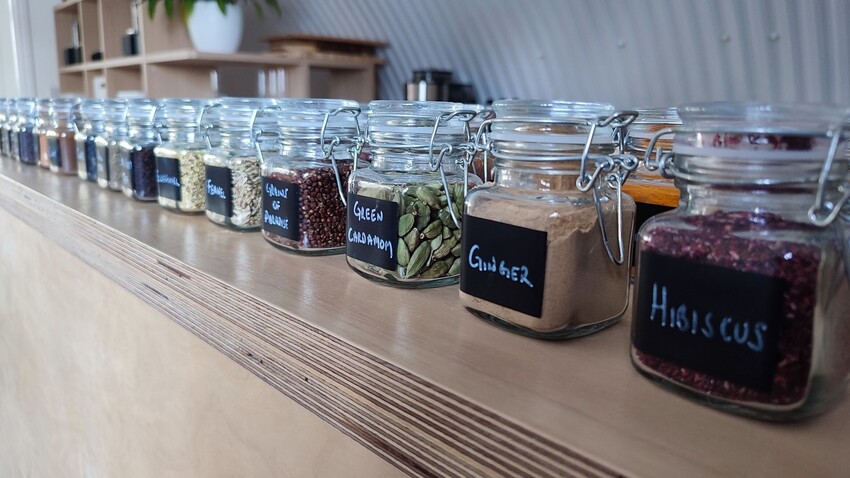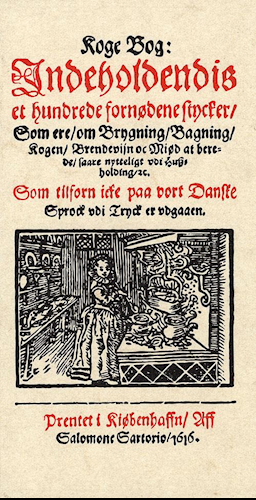
posted 21st May 2024

If you can't find wild nettles, store bought is fine
What are Botanicals?
In the previous episode on the history of aquavit, we said that at its core, aquavit is a spirit primarily flavoured by distilling it with caraway or dill seed. In this episode, we will look at why these seeds in particular are used in aquavit, and what other botanicals are and have historically been included.
As we discussed in our previous post, distilling in medieval Europe first appeared in a medical context, and it is this same medical context that largely informs the inclusion of particular berries, barks, leaves and other plant parts in distilled spirits. Herbal medicine was a vital aspect of healthcare at the time, with the healing properties of plants (both perceived and real) employed in combatting a range of ailments. Based on folk wisdom, traditional regional recipes, local practices, and classical texts, monks and healers would prepare infusions, salves, ointments, poultices, and tinctures from plants as remedies. Indeed, some of the best known medieval European manuscripts from this period were lavishly illustrated herbals, containing the names and descriptions of plants and their culinary, medicinal, and magical properties. It’s therefore perhaps unsurprising that, as the distillation of alcohol began to be practiced in medical circles, these same botanicals would be incorporated, as medical practitioners sought to use and amplify the potency of these ingredients.
Beyond the (perhaps questionable) health benefits of botanicals, including them in distillations doubtless helped to serve another purpose – to disguise the taste of poorly cut and potentially dangerous spirit. Distilling spirits is a fairly resource-intensive process, particularly with regard to raw materials such as wine. Therefore, while even early practitioners of the craft were no doubt aware that the first and last measures of liquid off the still tasted rather unpleasant (and in the case of the former, were perhaps dangerous), there was a strong incentive to keep as much of the product as possible. So, strong botanical flavours were likely used to disguise a multitude of distilling sins.
Finally, we shouldn’t discount the likelihood that various ingredients were added to distillations simply out of a desire to experiment, innovate, and create something delicious! Herbs and spices are a cornerstone of global cuisine, and there is no reason that distillers wouldn’t reach for traditional, easily accessible ingredients in order to imbue their spirits with familiar local flavours.

Delectable distillate... or deadly poison?

Caraway is by far the most popular aquavit botanical
The Spice of Life
Spices such as aniseed, cinnamon, cloves, and juniper have all historically been used as the primary botanical flavour for spirits, but aquavit's signature character comes from caraway and dill seed.
Closely related to fennel and historically associated with cumin, caraway is a pungent and aromatic biennial plant originally native to Asia Minor but now widespread over Asia, Europe, and North Africa. The dried fruits of the caraway plant are widely used in traditional cuisine, particularly in breads, cheeses, and sauerkraut for their pleasant flavour and preservative properties. It is also traditionally believed to aid digestion and strengthen the spirit with its characteristic earthy notes. Caraway grows particularly well in Scandinavia, due to its hardiness in winter and the long summer hours of sunlight.
Dill is a close relative of caraway, also native to the Middle East but now found growing wild all over Eurasia. In Greek myth, the beautiful youth Anethus was transformed into the dill plant, which still bears his name in Greek and in languages descended from Latin. The leaves of dill are a staple culinary herb in northern Europe, used in signature Scandinavian dishes such as crayfish, gravlax, pickled cucumbers, pickled herring, and stews. The dried seeds are commonly used in rye breads to add a mellow flavour. As with caraway, it is believed to have a number of health benefits, including aiding digestion, soothing menstrual disorders, and boosting the immune system.

Dill is less commonly used than caraway, but is no less delicious

With so many botanicals, the possibilities are endless...
The use of caraway and dill seed in aquavit thus reflects not only regional cuisine, but also the historical significance of preserved herbal remedies in Scandinavian culture, which due to its harsh climate does not have constant access to fresh ingredients.
Though caraway and dill are at the heart of aquavit’s flavour, many aquavit recipes call for more exotic spices such as orange peel, saffron, or cardamom, which could only be obtained through the distant trade routes that began to develop during the Age of Exploration. Scandinavians, as renowned sailors and explorers, were often at the forefront of these forays into the wide blue yonder, explaining the presence of these foreign botanicals in some aquavit expressions. That said, exotic imported spices were expensive, so native botanicals like caraway and dill remained dominant.
It's Medicinal, Honest
Without wishing to diminish the importance aquavit’s fantastic flavour, it’s also possible that the incorporation of botanicals with perceived health benefits could have contributed to the rising popularity of the spirit. Once distilled, it meant the medicine was always on hand without having to find fresh herbs in a difficult climate, and could be used to treat a wide range of ailments.
By the 17th century, distilled spirits were widely accessible, and even cookbooks included instructions for home distilling. The first cookbook written in Danish, published in 1616, includes instructions for how to make aquavit, along with a list of the ‘good things aquavit brings’, such as curing gout, kidney stones, headaches, coughs, deafness, and even tuberculosis (1).
It also says that “He who rubs the skin on his head and face with aquavit has always beautiful skin, strengthens the mind and brain.” Though we can’t confirm that this is 100% correct, there may be a grain of truth to it, as a recent study found that aquavit contains antioxidants that can help protect skin from damage caused by free radicals; essential oils with anti-inflammatory and anti-bacterial properties; and a high amount of vitamin B, which is essential for healthy hair growth (2).

For traditional recipes, folksy wisdom, and generally unhinged medical advice, look no further than 1616's Koge Bog
So, while we can’t recommend excessive amounts of alcohol, it appears that modern scientific research may offer some support for traditional knowledge: aquavit is good for you! Join us next time for an exploration of aquavit’s historical role in Scandinavian society.
(1) DISCLAIMER: this is not medical advice. Vintersol Distillery and its associates are not for the most part medical professionals. Well, some of us are doctors but we probably aren’t your doctor. Only drink aquavit to cure your tuberculosis if you are a 17th century peasant (we know you’re out there).
(2) https://braveinbloom.com/blogs/food-glossary/aquavit-impact-on-health-beauty-skin-wellness-and-beyond















